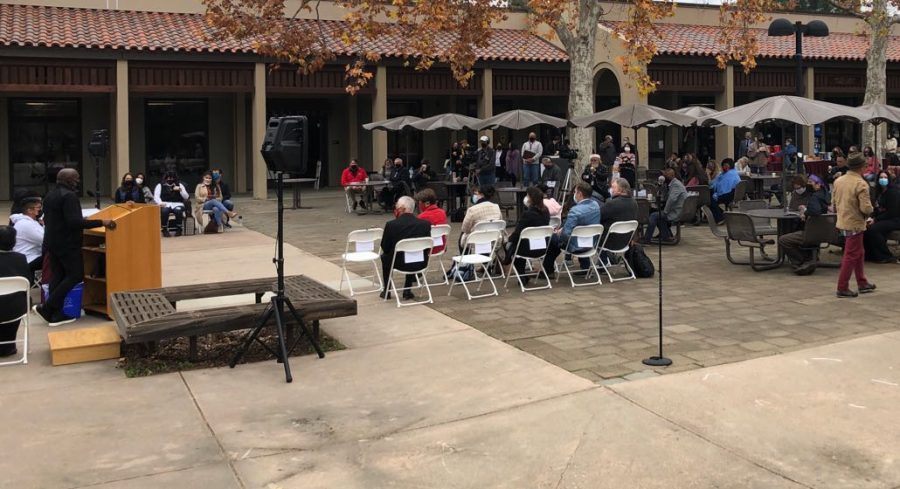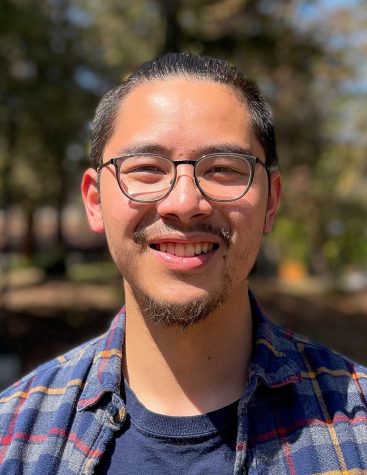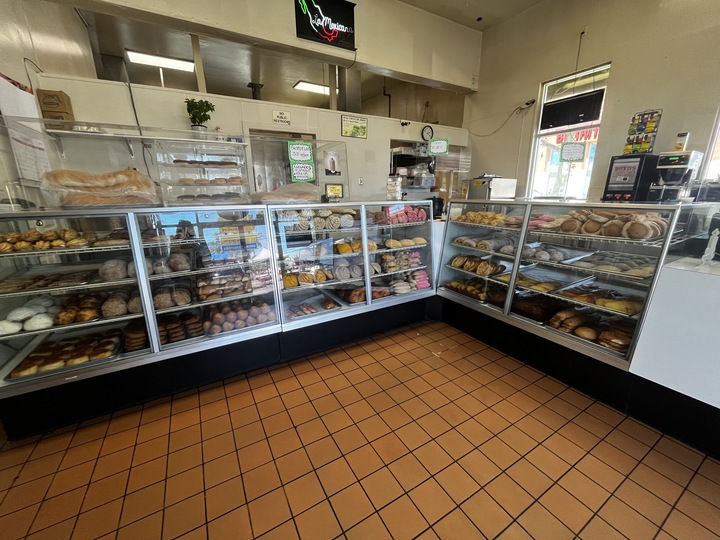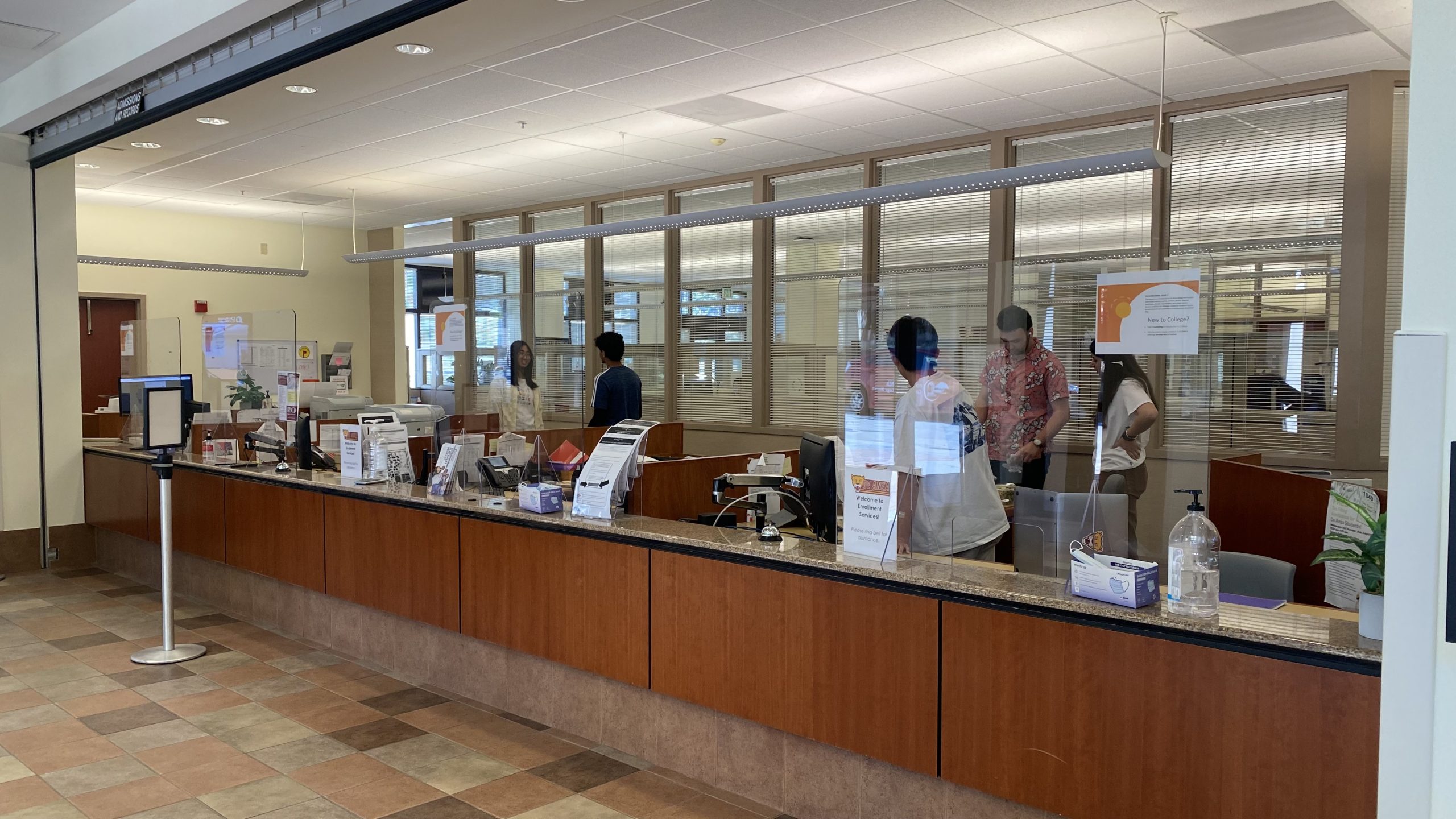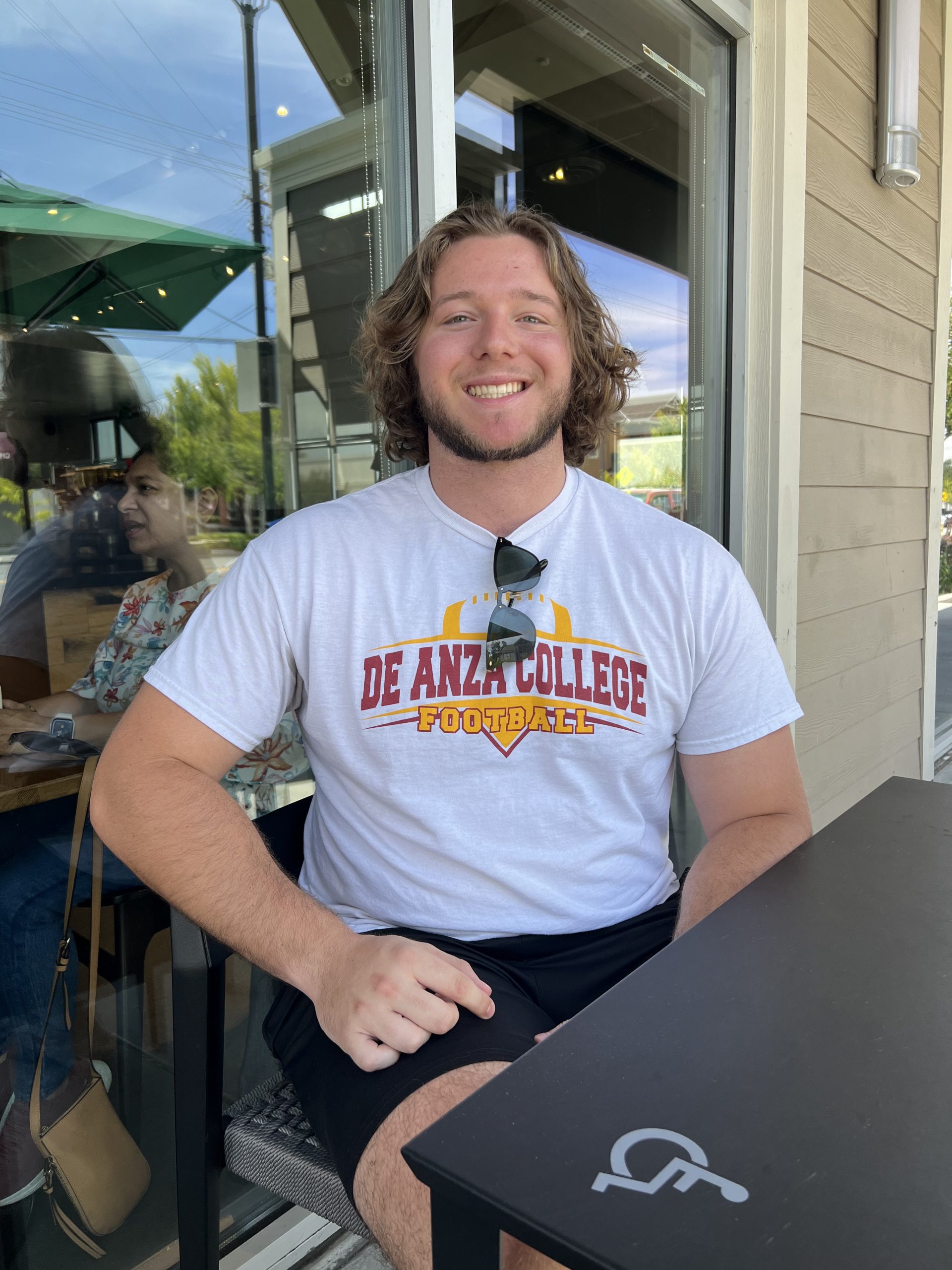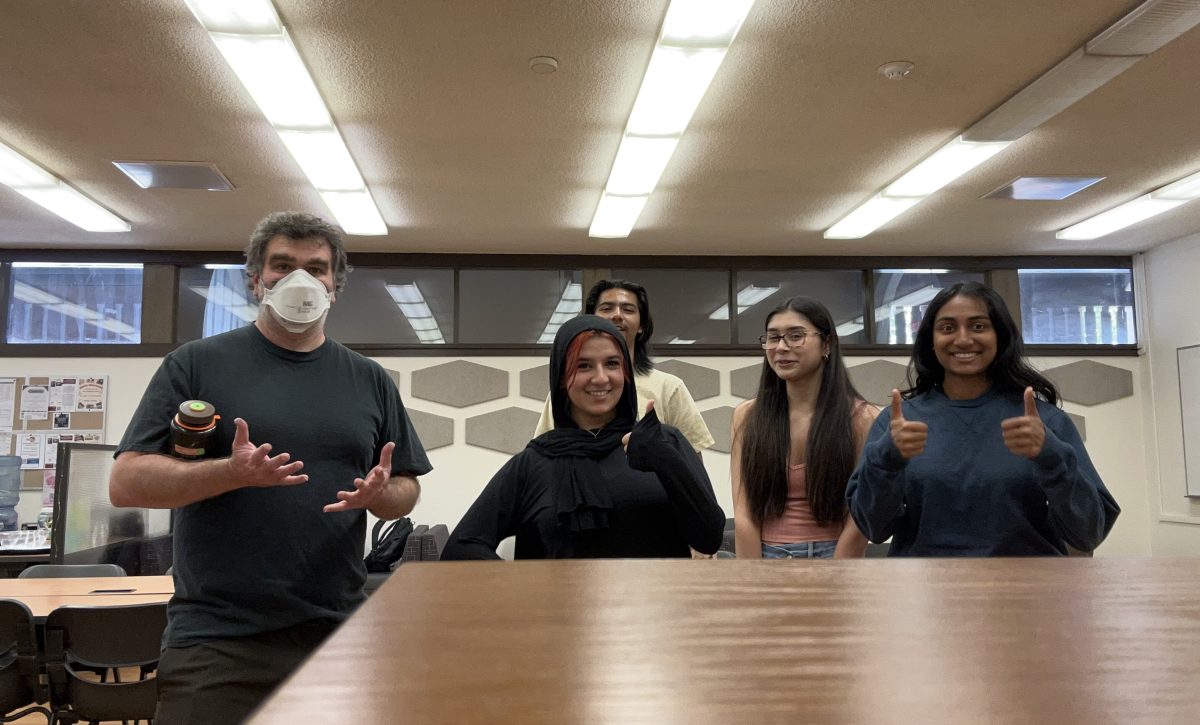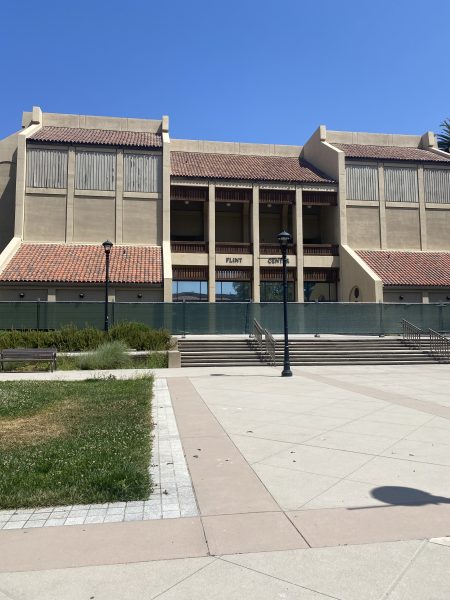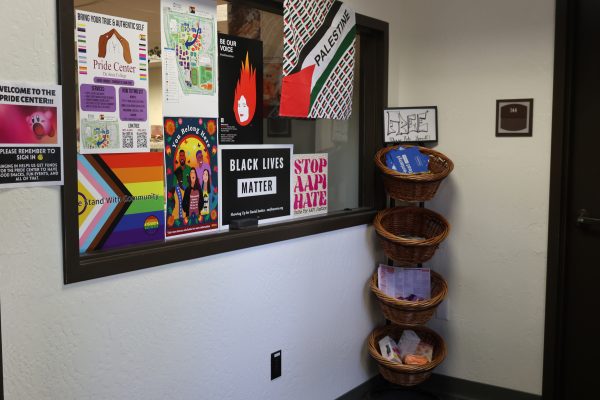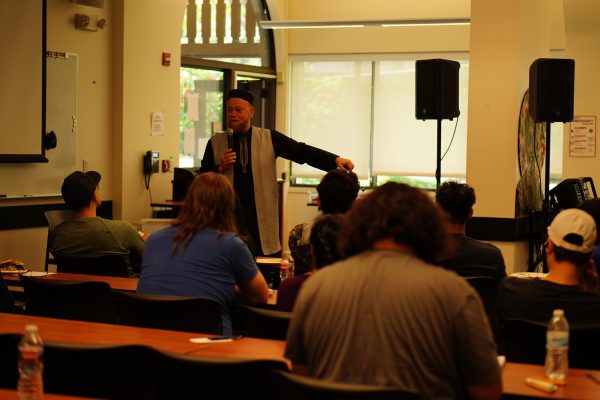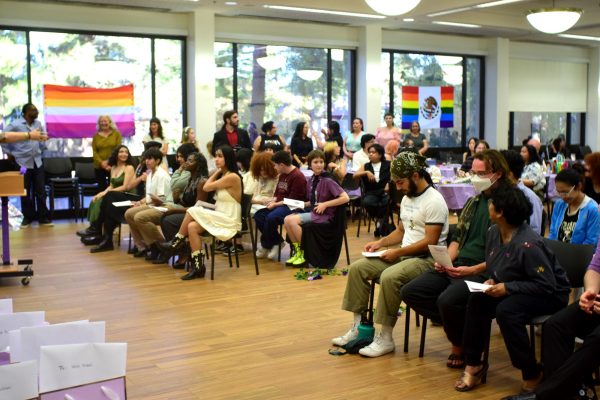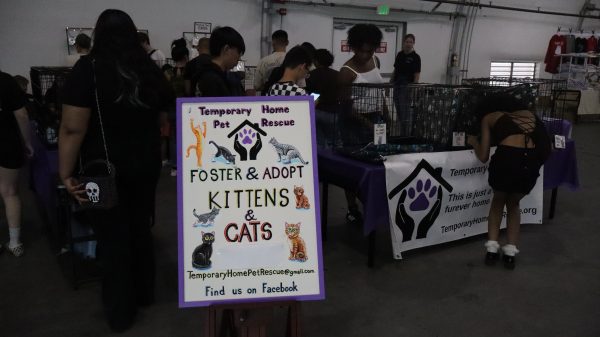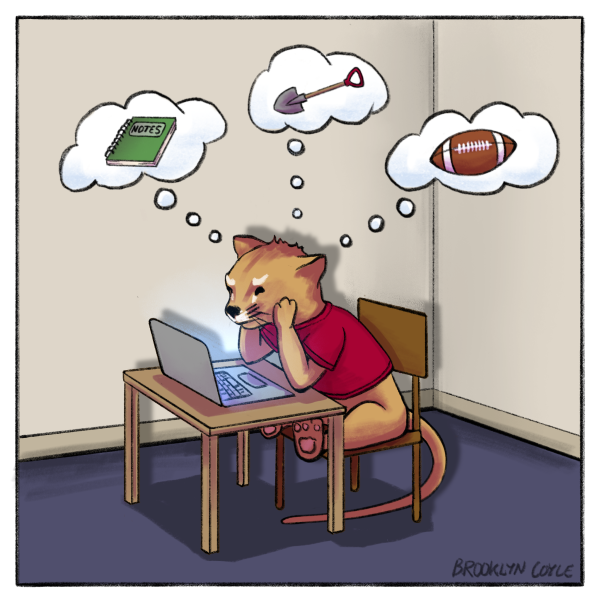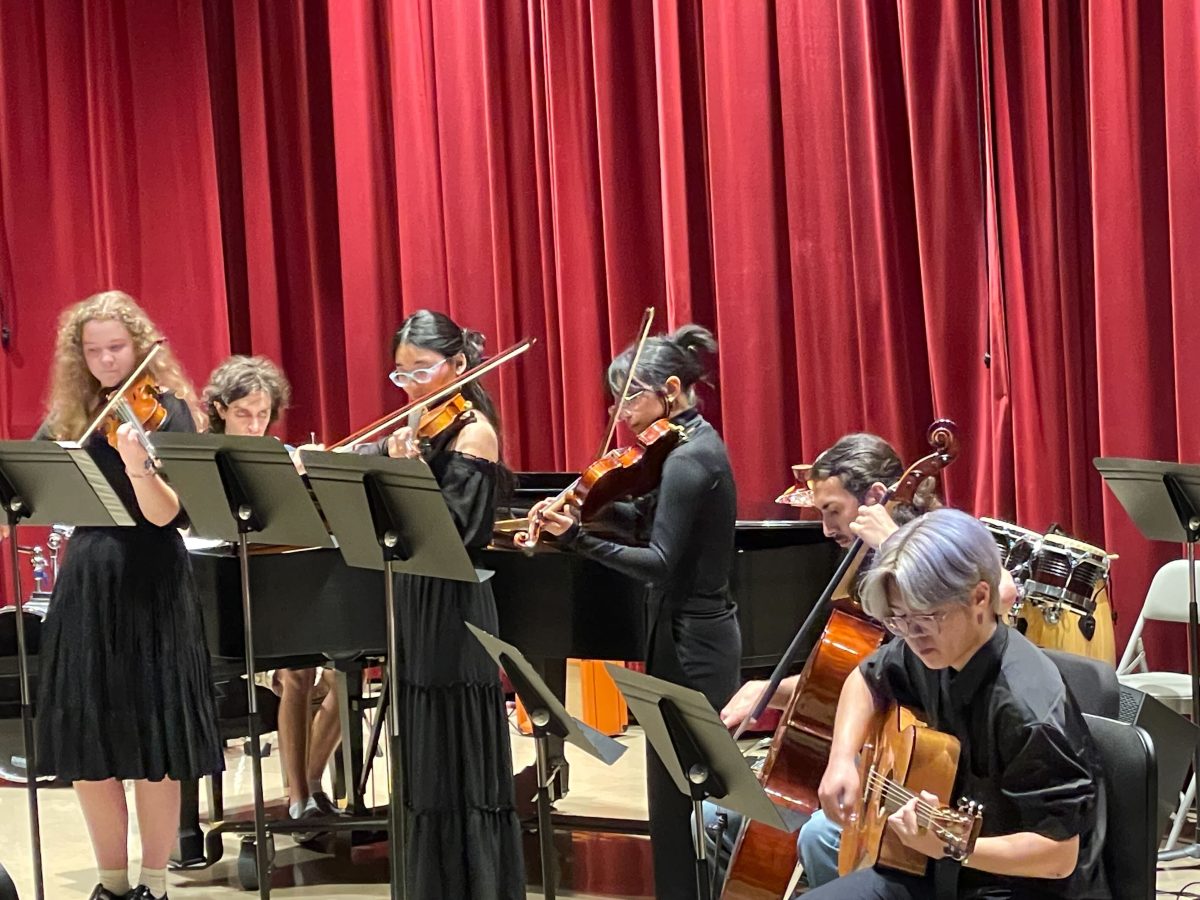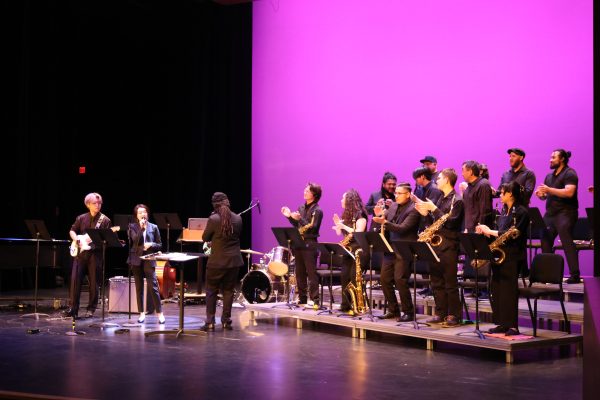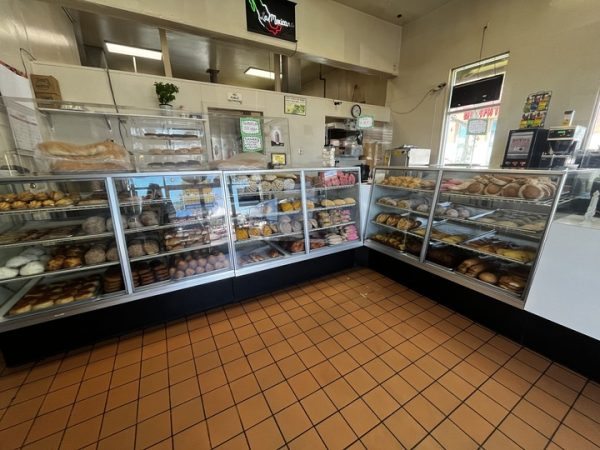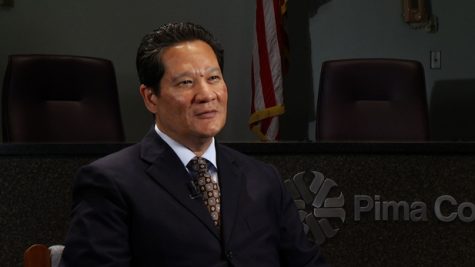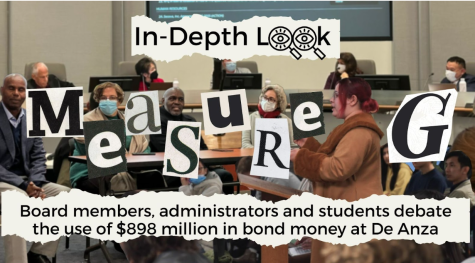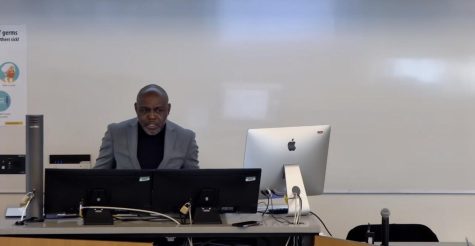De Anza President Holmes commits to an on-campus Spring ’22
Foothill-De Anza District holds “Emerging from Pandemic” townhall; 175 staff, faculty, students attend
De Anza College resident Lloyd Holmes addressing attendees of the Foothill-De Anza District-wide COVID town hall event on Dec. 3.
December 6, 2021
Cupertino – For the first time since sending students and faculty off-campus in March 2020, the Foothill-De Anza Community College District hosted an in-person “Emerging from the Pandemic” town hall event to outline how the schools hope to grapple with the evolving situation in the upcoming year.
Backed by a high vaccination rate and surveys that suggest that students want more in-person options, De Anza President Lloyd Holmes insisted that it is time for the school community to respond in-kind.
“We are not an online institution. We haven’t been one and that is not my desire whatsoever,” Holmes said. “None of us know what the ‘new normal’ is, but what we’ve talked about is us getting back to 85% of where we were in the Spring of 2019.”

Based on enrollment numbers by modality, that would mean that the Holmes administration is expecting up to 67% of classes taught at De Anza to be in-person by the Spring Quarter of 2022.
Despite the optimism from school leadership, pressing questions about on-campus infrastructure to tackle the pandemic remain. Several faculty members that attended spoke out about the absence of on-premise rapid testing and pressed for clarity on how the school is addressing air filtration inside closed spaces.
Further casting doubt on if the school is equipped to welcome as many students back was whether or not it was effectively using its own technology to track and prevent exposure to begin with.
Chief technology officer for the district, Joseph Moreau, announced suddenly in the middle of the Q&A portion of the event that De Anza was going to suspend its use of Optimum HQ.
“In terms of the technology that both colleges have been using for checking-in and health status reporting, I think we’re finding that those are becoming less useful over time,” Moreau said. “The reports were becoming quite redundant and in the very few incidents of exposures that we’ve had, we actually found some more effective ways of doing contact tracing.”
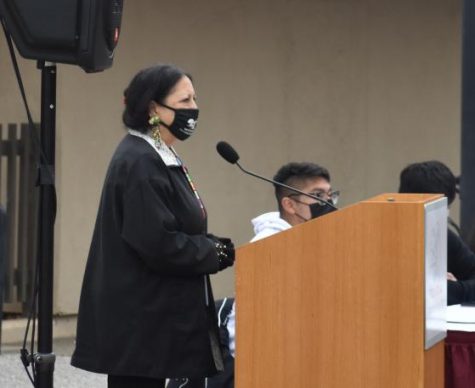
The town hall featured two separate student and faculty/staff panels that were both moderated by district chancellor Judy Miner, who asked participants to reflect on their experiences of the pandemic and what they looked forward to in the future.
When pressed on what school leaders could have done better, Miner reiterated that everyone was trying to make do with what information was available at the time.
“When I look back, I would have had more town halls of this nature earlier,” Miner said. “It felt like we were constantly making decisions so quickly in reaction to what the State and the County was doing, but when you look at the science, we have to wait to see what happens.”
The same can be said about the new emerging Omicron variant, which scientists are still weeks away from answering key questions about transmissibility, severity and impact on the existing vaccines.
Catherine Le, 19, a biology major and DASG chair of programs and events, was one of the featured speakers on the student panel. She said that the school should consider how the pandemic might have opened some doors for some.
“I hope school is more in-person, but at the same time I hope that there will still be a good amount of classes online,” Le said. “With online offerings, there is more flexibility in scheduling and that gives students more opportunities to take classes because you have to think of the people that have to work or are sometimes the breadwinner of their family. It’s unfair to make them choose.”
For some teachers, the slow return to an in-person work environment has been welcome. Chesa Caparas, an English professor and faculty coordinator for the Women, Gender and Sexuality Center, said that she’s seen a drastic improvement in her work-life balance since coming back to the classroom.
“I just realized that I actually need that hour-plus drive to decompress for my kids and leave my work at work,” Caparas said. “I think I have the best balance now when I can go home and actually be with my family instead of always staring at a screen.”
De Anza College’s return to campus web page detailing requirements and announcements can be found here.



